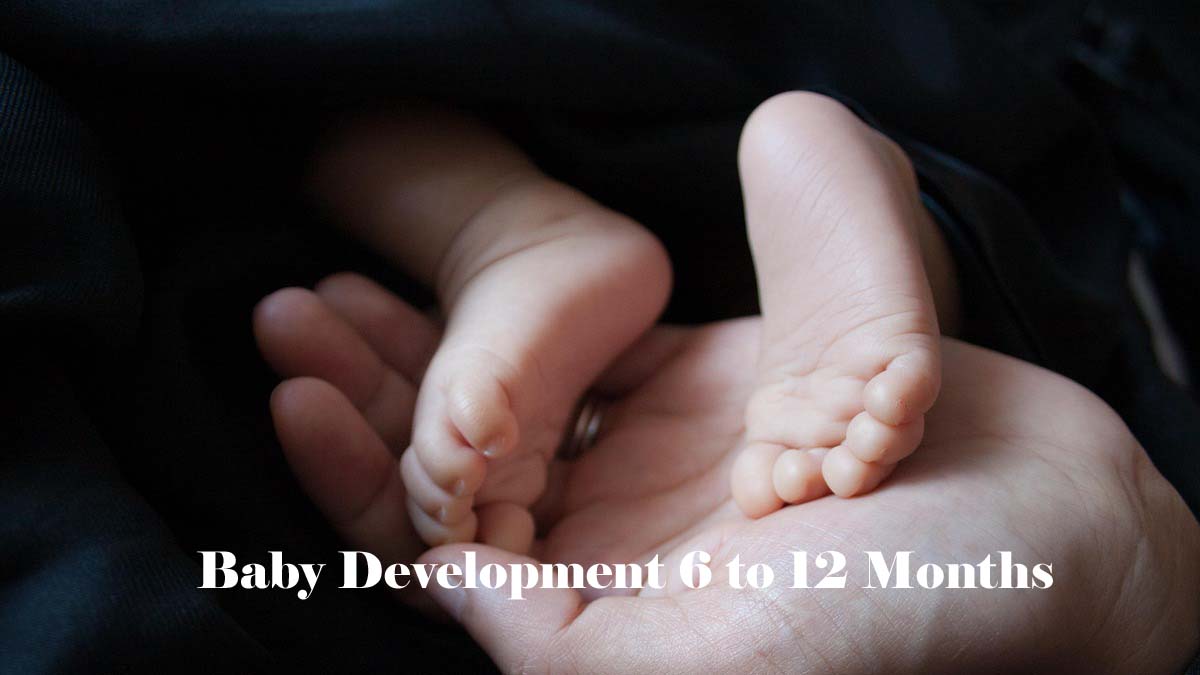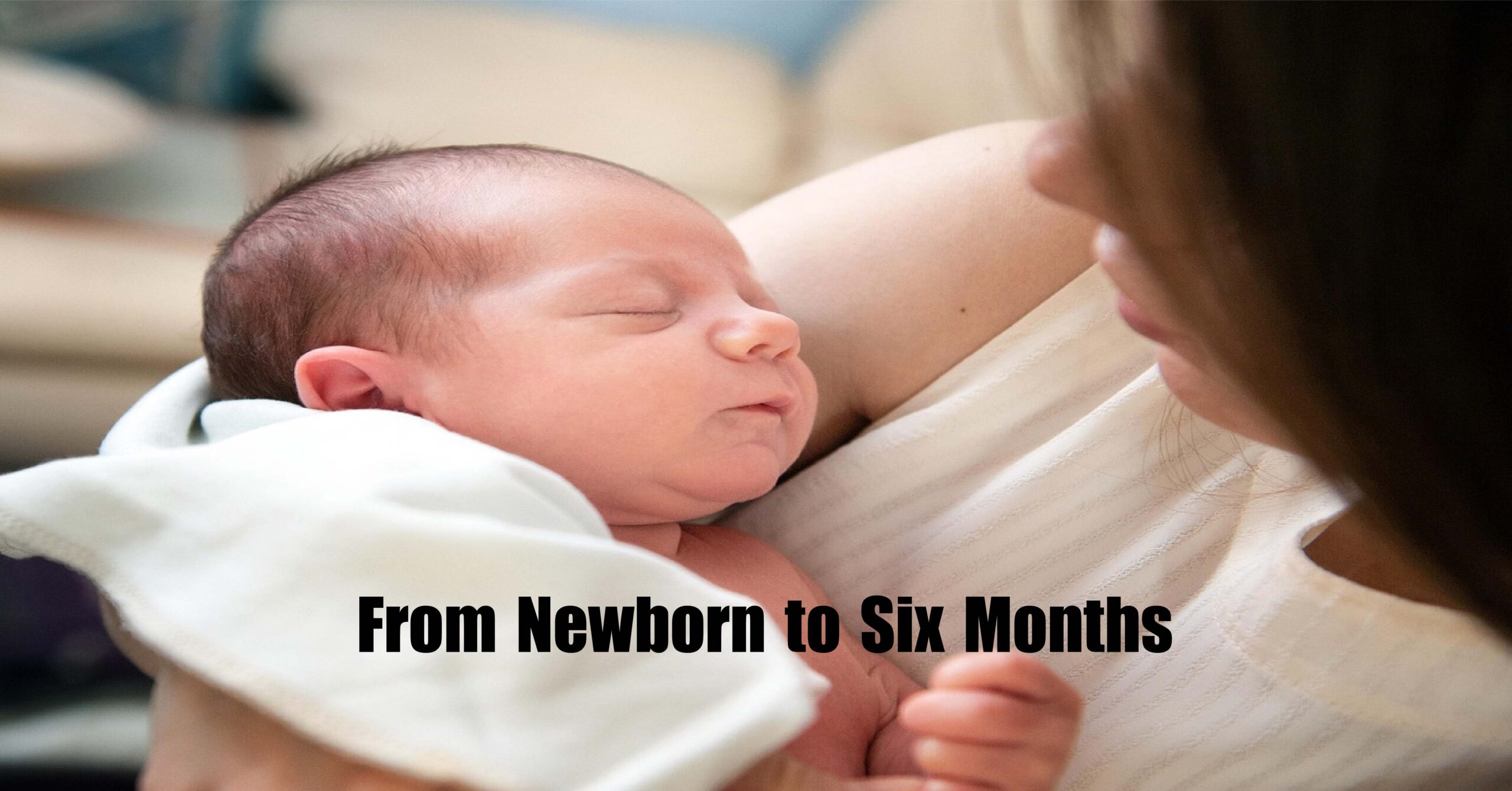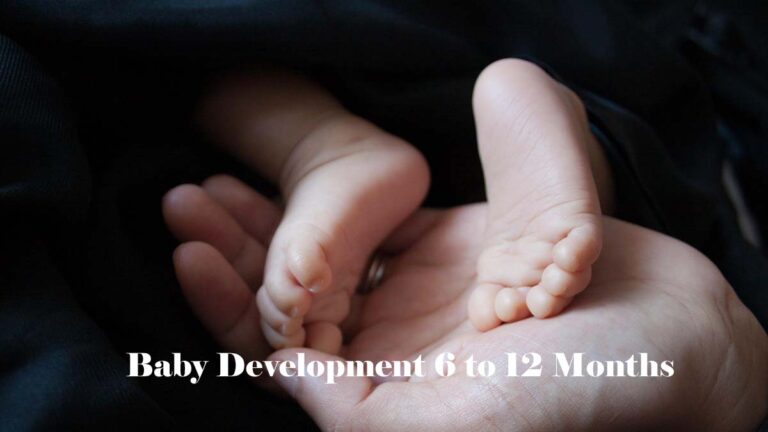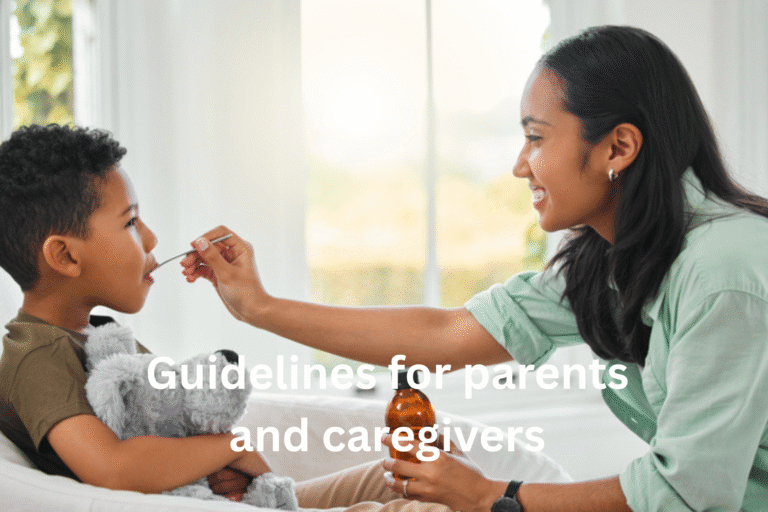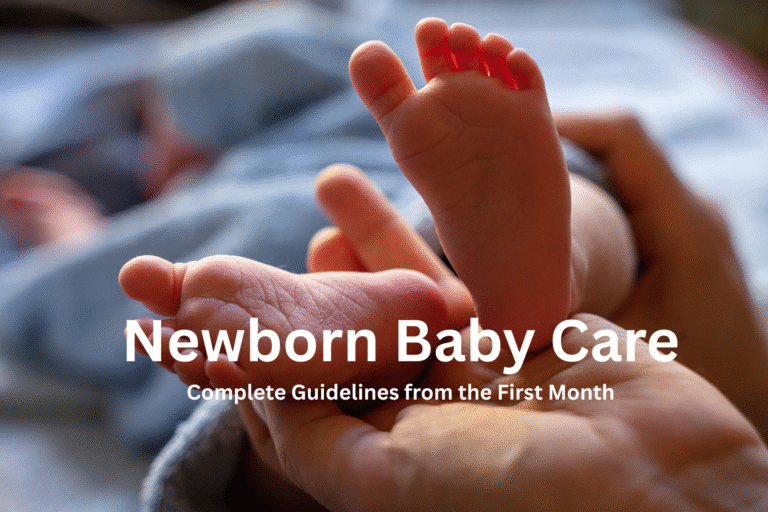Newborn to Six Months:
From the moment your baby is born, every day brings new changes, challenges, and milestones. In this post, “Newborn to Six Months”, we guide you through the incredible journey of your baby’s early development. Learn what to expect during each stage—from feeding and sleep patterns to motor skills and emotional bonding. Discover practical tips for daily care, soothing techniques, and how to support your baby’s growth in a healthy, loving environment. Whether you’re a first-time parent or looking for a refresher, this guide offers trusted advice for navigating the precious first six months of your baby’s life.
The environment in which the baby grows
The temperature in the room in which the child lives should be between 20º and 22º C.
Observe your baby’s habits and based on these design a daily routine of activities and sleep. A newborn baby sleeps about 20 hours a day, but the sleeping time decreases with age. The room in which the baby sleeps should be well ventilated and protected against noise, bright light and contaminated air. Never allow smoking in the room in which the baby spends time.
Raise the dropside of the crib while the baby is in it. Do not cover the sides with blankets or other overlays so that air can circulate freely. Move pillows, stuffed toys and plastic boxes away from the crib. Make sure that the toys hanging above the baby’s head are fixed firmly. It is important that the baby cannot reach up and grab them.
Never leave your baby alone on the changing table or in an unfenced bed. He can turn over and fall in no time at all.
Your baby’s clothes should be simple, pleasant, comfortable, and made of natural materials.
Bath your baby every day. Bathing improves the skin and has a beneficial effect on circulation, breathing, functioning of the nerve cells and on his health in general. Never leave your baby alone in the bathwater or near it, even if the water is quite shallow.
Do not leave balloons, plastic or paper bags near the baby. If a child puts them on his head, the airflow can be interrupted and he might suffocate. Babies and young children can swallow coins, beads and other small objects. Popcorn, sweets, peanuts, chewing gum, etc., should be kept out of the reach of young children. Throw away sharp-edged toys. Remove toys with tiny parts to prevent the baby from swallowing them. Nothing should be put around the baby’s neck (bands, ribbons, necklaces, little chains, etc.). Every now and then, wash the objects the baby plays with.
Take your baby out regardless of the season. In this way, the child’s general condition, appearance, appetite, sleep and mood are improved and resistance to infection strengthened.

Guess how I’m feeling!
From the very beginning, infants show different feelings in various ways – facial expressions, looks, voice, movements… Very soon, they learn to control their emotions (they turn their heads away from objects that frighten them and soothe themselves by sucking their thumb, etc.). As early as three days after birth, infants can imitate joy, surprise and sadness. So pay attention to the message your baby is sending you.
Your baby is unique. Watch her closely. Baby’s sounds, facial expressions and movements will tell you a lot about her needs. Some babies are easy to pacify and some are more difficult. There are babies who have no trouble sleeping, and others who would rather stay awake. When you learn what your baby likes and dislikes, you will find it easy to satisfy her needs. Don’t wait for the baby to start crying in order to tell you something. Stay close at hand and try to discover how your child is feeling. Find out what calms your baby when she is upset. Is it your voice, milk, water, a hug, a lullaby? Or all of these put together?
Your baby’s tears are not your enemy but an important signal that helps you understand your child. Do not just stop your baby’s tears. Try to find out what caused them. The sooner you react, the sooner your baby will calm down.
Sometimes, the baby may suddenly become upset, start crying inconsolably, tensing or lifting his little legs, and breaking wind. This indicates colic (stomach cramps). Colic occurs most often between the first and fourth month, and usually indicates that the baby’s digestive system is developing or that something in the food the baby is taking does not agree with him. The pharmaceutical industry has developed a whole range of teas and other “therapeutic” agents, which supposedly soothe the colic. None of these “cures” has been proved effective and most of them disrupt the established breastfeeding rhythm. You will help your baby best if you pick him up, lay him across your knees facedown, and gently massage his back. In this way, his little stomach will be under slight pressure, which reduces the pain. Remember that colic stops naturally after the fourth month.
Baby’s development and care in the first six months
Mummy, Daddy, look what I can do…
The pattern of development is the same for all babies, but the rate at which it occurs varies from child to child. Some babies may be weeks behind other babies at the same age, while others may be several weeks ahead of their peers.
With a newborn child, you can distinguish innate reflexes and spontaneous uncoordinated movements. Some reflexes are important for survival (e.g. suckling), while others are the basis for various skills that develop later (e.g. taking those first steps). Most reflexes disappear during the first 6 months of the child’s life.
A child’s motor control develops quickly. First, the baby learns to control the movement of his eyeballs, then those of the neck (in the third month, he raises his head while lying on his stomach), and, finally, of the whole body (at about six months old, he can sit with support). The baby first masters the movements of his shoulders and elbows, and only later the fine movements of the fingers. The baby has an inherent reflexive grasp, which disappears in the third or fourth month. He later learns how to release his grip on objects or drop them.
In the second and third month, while lying on her back and watching some object, the baby is making undirected movements. In the fourth and fifth month, she observes an object and firmly holds a toy in her hand. In the fifth month, the baby moves both hands closer to the object and touch it. In the sixth month, she can hold an object in each hand.
Your baby is exploring the world around him
From the moment of birth, the newborn baby’s senses function well and are mutually coordinated. A baby does not have to learn to see, hear, smell, feel touch, or taste. These abilities are innate. The baby just needs experience.
Sight
As soon as he was born, the newborn baby had a developed sense of sight. If you hold him in your arms, he can see your face. He can distinguish colours and contrasts (light and dark), but he is not yet able to notice fine detail.
When only two days old, most infants recognize the shape of their mother’s face and they recognize their mother’s whole face around the eighth week. When the baby is in a good mood, he will be like imitating his mother sticking her tongue out.
Babies prefer looking at human faces to watching objects, pictures, patterns, etc. Six-month old babies remember new faces very well. If they stare at a person’s face for two to three minutes, they will probably remember it a few weeks later.
Hearing
The infant turns his head and eyes towards the source of sound. The newborn can distinguish his mother’s voice. When the baby hears a pleasant sound, he will calm down and his face will brighten. When the newborn baby hears other babies’ crying, he often begins crying at the top of his voice. The upset baby will be quickly pacified by his parents’ gentle voices. A baby can be calmed down by your heartbeats when you lean him against your chest, and his crying can be stopped if you sing a soft lullaby. Lullabies around the world have a soothing effect on infants.
Touch
Sensitivity to touch develops immediately at birth. Newborn babies respond positively to touch around the mouth, on the palms of the hands and on the soles of the feet. Infants are more sensitive to stimuli that are lower than body temperature than higher. Like you, infants are sensitive to pain too. Gentle touching is important for both the physical and emotional development of babies. So caress your baby as often as possible!
While holding your baby in your arms, support the neck until the neck muscles develop.
Smell and taste
Infants have a well-developed sense of taste. Immediately after birth, babies can recognize a sour taste while sensitivity to salty and bitter flavours appears between the fourth and sixth month. Mother Nature has set in place a system whereby babies reject unpleasant flavours and enjoy sweet, nourishing ones. Of course, babies like breast milk best of all.
A well-developed sense of smell helps newborn babies learn more easily and quickly about the world around them. Immediately after birth, babies recognize their parents by smell. This fact lies behind the belief that newborn babies should be put to the mother’s breast immediately after birth and in their father’s presence as well.
Newborn babies develop their senses during breastfeeding, bathing and changing. For this reason, it is important to be as calm and relaxed as possible at such moments. Babies do not like being suddenly lifted up, being touched with cold hands, an unexpected loud noise, hurried nappy- changing, or removal of support.
Intellectual Development
The intellectual abilities of infants are greater than previously thought. Infants are able to understand the simple relationship between cause and effect as early as ten weeks old.
When your baby is two months old, she usually chooses a new object rather than a familiar one. This ability is very important as it helps the baby to become aware of her environment. The baby perceives an object by looking at it and touching it. If an object is not close to her, the baby does not think of it. However, as early as three to four months, the baby begins to understand that objects exist even though they are not in her field of vision.
The most important element in the overall development of a child is stimulation (reading, singing, playing) and parents should begin these activities from birth. Talk, sing and recite rhymes to your baby. Imitate your baby’s facial expressions and the sounds she is producing, as this is a good way of starting a “dialogue” with the baby. Study your baby’s body “language” and see what attracts her attention and interests her in her surroundings. Placing objects and toys around her provides a very important stimulus for the baby. Objects put within the baby’s field of vision help her to look at them carefully, feel and touch them. But babies are more interested in your face than in any of these objects. The way you smile and talk while holding her will be the most effective stimulus for your baby. Soon, your baby will try to smile back. This is one of the key steps in learning communication with other people.
Look who’s talking!
Children are born with the capacity to learn all the languages of the world.
Around the sixth or seventh week, the baby starts cooing. He coos when he is feeling good or when you are talking to him. By the third month the baby begins to babble and imitate certain sounds.
The more you talk to your baby and the more carefully you listen to him, the better his speech will develop.
Talk to your baby while doing everyday chores. Bend down close enough so that your baby can see your face and catch your eye. Babies like lullabies, tongue-twisters, counting rhymes and any song with a strong rhythm and pleasant tune.
Even if he does not understand it, your child will sense your message.
Let’s play!
Sense and sensory motor development enable the baby to gradually explore the world around him (he sucks his thumb, tries to kick something, grabs the toys hanging above the cot, etc.). Visually, the baby learns to follow objects, people and sounds. The baby enjoys playing with his body and watching his reflection in the mirror. As their new motor functions develop, so babies learn how to handle objects. They experiment with sounds and exchange coos with their parents.
A baby needs interesting objects and a safe, clean room to play in. Watch your baby play and encourage him. Play with your baby yourselves. The baby will enjoy your voice, touch, smell. Touch your baby’s forehead with your finger; follow the contour of his nose, tickle him behind his ears, take hold of his arm or leg. Watch his reactions, Talk to him in a calm voice. Name each part of his body you are touching. Repeat the games your baby loves and invent new ones that your baby will enjoy. Do not miss the pleasure of playing with your baby – in a few years’ time you will miss those lively movements, smiles and little arms sticking out of the cot.
Rattles with different sounds, soft toys, balls, large building blocks, rubber toys that make a sound when squeezed, musical boxes, etc. – all of these are suitable toys for babies. Turn your baby’s bathtub into a sea – throw seashells, starfish, plastic fish, and toy ships into the water… And remember: never leave your baby alone in the bathtub!
While outdoors, let your child touch a flower, tree, leaf, or stone. Let him discover his feelings with his own two hands. Anything around can be used to learn a new experience.
What’s on the menu today?
Nutrition is one of the most vital factors in a baby’s growth and development. There is only one recommendation for healthy and proper nourishment of a baby during the first six months:
Breastfeeding
Breast milk is the healthiest, best and cheapest food for babies in the first six months of life.
All recommendations related to breastfeeding can be summarized in a few simple tips:
- Put your baby to the breast immediately. Nurse your baby in the first hour after birth. That is your right and that of your baby. The nurses and doctors are responsible for helping you to exercise that right!
- Breastfeed your baby only (adding no other food or liquid). Nurse your baby on demand.
- Keep breastfeeding into the second year too, along with suitable complementary nourishment.
In order to follow these “golden rules”, DO NOT:
- give any liquids or food except breast milk in the first six months of life,
- restrict the number of feeds or limit the duration of “active” breastfeeding.
Giving your baby a dummy does not help breastfeeding. On the contrary, this might “confuse” the baby and “spoil” the established nursing rhythm.
The most common mistake in feeding babies during the first six months. is adding water, tea or other liquids. Mother’s milk is rich in essential nutrients, minerals and vitamins that are perfectly acceptable and digestible by the baby. Like any liquid, a high percentage of breast milk contains water. Therefore, the baby should not be given water or tea during breastfeeding or immediately afterwards.
Breastfeeding is the most natural thing in the world, but it can be hard at the beginning. Until you establish a breastfeeding routine with your baby, until you master this skill together, you will need time and patience, sometimes even the professional assistance of a health visitor or paediatrician.
The advantages of breastfeeding for babies
Mother’s milk is a good natural protection against a large number of infections and this lasts as long as the baby is suckling. Breast-fed children seldom get stomach and respiratory infections, and rarely fall ill with cancer, diabetes and some other illnesses, unlike children fed otherwise. Their psychomotor, emotional, social and intellectual development is more stable. Breastfeeding protects children from becoming overweight later on.
The advantages of breastfeeding for mothers
Women who breastfeed recover quickly from childbirth. Postpartum depression is less frequent. Breastfeeding often postpones the resumption of menstruation and reduces the risk of breast and ovarian cancer. A firm emotional bond is established between mother and child and their
relationship takes on a better quality. Mothers who breastfeed are more mobile as they always carry the baby food with them!
The advantages of breastfeeding for fathers
The advantages of breastfeeding for everybody
Instead of preparing meals for the baby, you will be able to play with her. Besides, natural nourishment makes big savings in the family budget. Society benefits from breast-feeding, too, because healthcare expenses are reduced (the breastfed baby falls sick less often, so there are fewer visits to the doctor and fewer outlays on medicines).
A few practical tips
You should nurse your baby in a sitting position (the baby is in your arms, and you lay her on your forearm and palm) or in a lying position. Just before you start breastfeeding, make yourself comfortable and relax. The baby may be calm or animated, but she should not be crying. Where necessary, you may breastfeed your baby in a standing position.
Hold your baby’s head. The nipple should fill the baby’s mouth so that there is no free space and it should not move (when your baby is latched onto your breast properly, the nipple will not look flat or squeezed after nursing).
The baby is not well positioned if her mouth is fully open, if her lower lip is turned outwards, if her chin touches the breast, if she is sucking and pausing alternately, and/or if she makes a loud sound swallowing the milk.
If you experience pain in your nipples during and after breastfeeding or if your milk ducts are blocked and your breasts hard, these are also signs that the baby is not suckling properly.
How often and how long should the baby be breastfed?
- In the first week the baby wishes to suckle every three hours, every two hours, every hour (and maybe more often), all in all, each baby has his own rhythm of nursing.
- To ensure continuity of milk production and feeding, night feeds are especially important. The baby himself stops asking for night feeds spontaneously, most often after the third month.
- Fall in with your baby’s rhythm. Do not wake your baby up to feed him!
- The usual breastfeeding pattern in the first months is eight to twelve times over 24 hours.
- The baby himself decides on the length of the breastfeed.
- Babies usually suck for 10-30 minutes from each breast.
- Forcible interruption of breastfeeding is not good for the baby.
- Too long or too frequent feeds may be a sign that the baby is suckling incorrectly.
If your baby is sleepy during breastfeeding, raise him to a more upright position. Loosen his arms and legs, massage him gently and talk to him. If the baby goes on sleeping…
You should neither restrict the duration of active breastfeeding nor add some other food or liquid (above all, avoid bottles with teats).
It may happen that the baby refuses the breast. Possible causes for this are the baby’s or mother’s anxiety, pain due to an uncomfortable position, or being given a dummy. If your baby refuses the breast, help him overcome the problem. Hold him quietly, close to your breast, and do not make him take the breast longer than a few minutes. If the baby starts to cry and resist, stop trying to breastfeed him and try some time later, when he calms down. Do not hold your baby in the breastfeeding position while he is being given an injection or when he is exposed to some other painful action so that the baby does not associate this position with the sensation of pain. Until the baby starts suckling again, you should give him milk you have expressed from your breasts (in a teaspoon or from a glass).
Mum’s Corner.
Breast care
Wash your breasts with water only. The use of soap, lotion, oil, cream or vaseline may be harmful. Do not wash your breasts immediately before breastfeeding to prevent washing off the natural protective oils and scent by which your baby recognizes you. If your breasts remain painful, sprinkle some of your milk on them and expose them briefly to the air. Bras are not needed (a tight bra can block the milk ducts), but you may wear a bra. This should be made of cotton and the correct size (synthetic bras restrict airflow to the nipples).
Blocked milk ducts and hard breasts
Most frequently, milk ducts become blocked when the baby is not feeding effectively. If this happens, make sure that the baby is latched onto your breast properly and that you let her suckle whenever she wants. Blocked milk ducts make your breasts hot and painful and the skin taut and shiny.
When there is a serious blockage, milk is not produced. If this happens, apply a cold flannel to the breasts between feeds. Before nursing, put a warm flannel around the nipples to stimulate milk flow and express a little milk to help your baby latch onto the nipple properly. After the feed, again apply a cold flannel to your breasts. If breastfeeding does not help reduce the blockage and tautness, you should express your milk between feeds.
Sore nipples
Breastfeeding does not hurt. If you put your baby to the breast correctly, you should not feel pain while he is sucking. Soreness of the nipples may disappear when the cause of the soreness has been discovered (the baby is attached to the breast incorrectly, the baby does not suck often enough, the baby does not latch on properly, etc.). In addition, after breastfeeding you can sprinkle your milk over the nipples to relieve the nipple tissue. Put a warm flannel on your breasts before breastfeeding to encourage milk flow. Start feeding on the less painful breast. If your baby falls asleep during the feed, remove him from your breast. Do not limit the number of feeds.
Should you have any trouble or hesitation concerning breastfeeding, ask your health visitor or paediatrician for advice. Seek professional assistance until you are sure you can continue breastfeeding.
Vaccination, it sounds so important!
Immunization or vaccination is the fastest and most economical measure to prevent suffering and death from serious contagious diseases. Vaccines help children build up protection against infections. An unvaccinated child can easily fall ill from measles, whooping cough, and some other diseases. Children who survive these diseases may become sickly or develop more slowly. Vaccines are only effective only if given to a child before he falls ill.
All children, including children with special needs, should be vaccinated. Vaccination is administered either by injection or orally (through the mouth). The effectiveness of vaccination depends on the healthcare service, but to a great extent on you yourselves.
The immunization schedule in Serbia is similar to that of other European countries and is equal to other European systems in every way. Compulsory vaccination is free and is administered in healthcare centres and maternity hospitals. Vaccination protects not only your children but other children as well.
Babies are vaccinated immediately after birth. The first is the BCG vaccine, an anti-tuberculosis vaccine. At birth, children get a hepatitis B vaccine. Later they receive another two doses (one month and six months after the first dose). When the baby is two months old, he gets his first doses of vaccines against poliomyelitis (polio), vaccines against diphtheria, tetanus and whooping cough, as well as vaccines against haemophilus influenza type B (a bacterium which often causes respiratory and other serious health conditions in babies at this age). For full protection of the child, these vaccines are given twice more, usually at six-week intervals.
According to the immunization calendar, children get more doses of vaccines against these diseases (so-called revaccination).
On your first visit to the doctor, ask for a copy of your baby’s own vaccination card. Entering data in the child’s personal vaccination card, i.e. your personal record of the immunization carried out, will allow you to monitor your child’s state of health and remind you when to take your baby to be vaccinated.
If, for any reason, the baby does not receive all the required vaccines in the first year of life, it is very important that vaccination be carried out as soon as possible.
Coughs, diarrhoea, a slight temperature or some lighter ailments are not reasons for your baby not to be vaccinated.
If the baby is undernourished, if he has some physical injury or some other developmental impediment, protection against the most common contagious diseases is also necessary. If the doctor thinks otherwise, insist on a specialist opinion and vaccinate your child anyway.
Some undesired effects may appear after vaccination, though rarely: temperature, rash or minor swelling. These are short-term temporary symptoms, which, with your care, regular nourishment and additional liquid, disappear without any harmful effects on the child’s health. If these occur, (intensified) breastfeeding is especially useful.
If undesired reactions to the vaccine do not disappear within two to three days, take your child to the doctor.
Wash your hands before and after meals…
Household waste (from bathrooms, kitchens, laundry-rooms, stables, etc.), contains bacteria, viruses and intestinal parasite eggs. They are the causes of contagious diseases (hepatitis, typhoid fever, dysentery, etc.).
Contrary to conventional wisdom, babies’ and young children’s excrement contains bacteria and viruses. It should be handled in the same way as adult faeces.
Solid waste is a breeding-ground for flies and also attracts rodents, which are the carriers of many contagious diseases. It is therefore important to keep rubbish in suitable containers with a lid or in tied plastic bags. Do not forget to wash your hands after taking out the rubbish!
Household cleaning agents (detergents, bleach, insecticides, etc.), like medicines, should be kept away from food and out of the reach of children.
Keep food and drink in a clean place. Cover it and protect it from flies, insects and rodents. It is best to keep food in the refrigerator, freezer or in airtight containers. Check the shelf life, appearance, smell and taste of food. Throw away bad foodstuffs immediately Wash raw food thoroughly before you start cooking it. Cook meat for two hours at 100ºC. Keep cooked food at either a high (60+ ºC) or low (-10 ºC) temperature. Heat food cooked earlier to a high temperature until bubbles appear. Regularly clean the work surfaces on which you prepare food.
Washing your hands is the most vital and simplest measure of personal hygiene. It prevents the spread of disease. Wash your hands with soap and water:
- Before and after preparing food
- Before and after eating
- Before and after changing nappies
- After using the toilet
- After handling a child’s potty
- After handling rubbish
- After touching animals
Baby teeth
There are a lot of stories about teething, and also quite a few unknown facts. Primary (deciduous) teeth most often come out between the fifth and seventh month, although this may vary a lot. They may appear in the first month or even after the first birthday. Most often, the lower central incisors come through first, followed by the upper central incisors.While the teething process runs smoothly for a certain number of babies, it may be very dramatic for others. Parents are upset because their baby has diarrhoea, a temperature, she cries, she is irritable and refuses to eat, or she has trouble sleeping – a whole range of symptoms that are due to teething. And it is true that even doctors argue over whether these two events (teething and the symptoms mentioned here) are inter-related. To ease your baby’s discomfort temporarily, you may give her some clean, hard, safe object and she will put it in her mouth at once. Some people recommend giving small doses of painkillers. This can be very dangerous – you should not forget that every medicine has side-effects and you are never sure when they will appear. It is not recommended to give medicines without a paediatrician’s approval. What is important to know is that these are all temporary symptoms, which will disappear very soon without any ill effects. However, do make sure you write down in your baby’s diary when and how her first tooth came out.
Remember:
- A baby’s senses function well from birth.
- The intellectual abilities of infants are greater than previously thought. Infants are able to understand the simple relationship between cause and effect as early as 10 weeks old.
- Breast milk is the healthiest, best and cheapest food for babies in the first six months of life.
- Put your baby to the breast immediately after birth.
- Breastfeed your baby on demand.
- In addition to food and security, a baby needs love to grow and develop properly. Cuddle your baby, sing to him and talk to him. You cannot spoil your baby with love and attention.
- The more you talk to your baby and the more carefully you listen to him, the better his speech will develop.
- A baby’s tears are not your enemy but an important signal that helps you understand your child. When your baby is restless, soothe him with your presence, a hug and loving words.
- Play with your baby.
- The most vital and simplest measure of personal hygiene is washing your hands.
- Take your baby to be vaccinated – in the first six months, the baby is given the first vaccines against tuberculosis, polio, diphtheria, whooping cough, tetanus, acute hepatitis B and against haemophilus inftuenza type B (a bacterium causing serious infections).
- Fathers’ participation in raising children is equally important for both girls and boys. Don’t wait for your daughter to reach girlhood to find out what kind of role model you have been in her life. Don’t wait for your son to grow up before playing football with him.
Thank you so much babytakecare


